Today, workers expect more from their jobs than ever before—they want purpose, a sense of belonging, and personal fulfillment. In response, organizations have started contemplating questions like: Why do we exist? What are we doing? Are we a force for good? Yet, for all the buzz about purpose, business purpose alignment remains one of the most challenging concepts for businesses.
It’s common to see vague purpose statements centered around being the best or leading provider whatever sector the organization operates. Companies list tired words like excellence or integrity and a surprising number of them end up merely as filler for ‘About Us’ sections—or worse: punchlines among staff.
But, beyond defining purpose, connecting employees to those painstakingly-crafted purpose statements often presents an even more significant challenge for leaders—most workers can’t articulate why their organization exists or what its goals are. In a Gallup poll, just 41% of them admitted understanding their organization’s purpose. And another survey conducted by PwC’s Strategy& found that a mere 28% of workers feel connected to their employers’ purpose.
This represents a huge loss for businesses in a world where employee engagement has become a deciding factor in corporate performance and long-term success. It’s an even more significant loss for employees who are left feeling stuck, unhappy, and burnt out.
The good news is that people want to have a purpose in the work they do. In a McKinsey survey, 70% of respondents cited work as a defining factor in their sense of purpose—with 63% saying they would like more opportunities to live out that purpose in their day-to-day work.
The way we view businesses and work is undergoing a deep change. And the future belongs to organizations that lead with purpose.
Building a purpose statement that resonates with your workforce
A clear and compelling purpose statement brings people together, inspires them to do their best work, and serves as a compass for your entire organization. To achieve all of this, it should be narrowly focused on your organization’s values, reflect its day-to-day reality, and center around concrete and measurable goals.
Make it authentic
While a top-down approach may seem easier, it’s also a shortcut to a generic statement rooted in vague aspirations. After helping hundreds of leaders in their journey to define their organizations’ purposes, we’ve found that a bottom-up approach is the best way to effectively connect with workforces.
Engaging workers at all levels of your organization ensures your vision, mission, and values respond to genuine needs rather than blind idealism. More importantly, when you offer employees beyond the C-suite a stake in such a decisive part of the organization’s future, it increases the likelihood they’ll be more invested in its success.
Although including as many people as possible is ideal, it may not always be feasible or practical. One alternative we frequently suggest is to tap into leverage points. Leverage points are your organization’s ‘influencers.’ They’re individuals whose actions and viewpoints have an outsized influence on those around them—regardless of level or hierarchy.
Bringing together a group of people with so much weight within your company will not only help raise the task’s profile and communicate your organization’s commitment to inclusion—it will make it much easier to pitch the results to the rest of your workforce later on.
Narrow your focus
The pressure to create deep and inspiring purpose statements often leads organizations to produce messages that have little to do with the nature or scope of their business.
“Most organizations try to be everything to everybody,” explains Gary Cohen, managing partner at CO2. “People think diversification means being safe. But what they find in practice is the more narrowly-focused you are, the more needed you are.”
He adds: “Rather than stating: We want to climb every mountain in the world, your purpose statement should be closer to: We’re going to climb this mountain and this is how we’re going to do it.”
Consider social impact. Many organizations feel they need to add a social element to their purpose statements. However, not every company operates in a sector where their everyday work lends itself to significant social impact. An enterprise providing IT services will not have the same effect on people’s lives as one providing healthcare or a nonprofit.
Attempting to claim a purpose far outside the scope of your organization’s work will not only yield meaningless purpose statements but also make you look disconnected from reality.
Your purpose statement doesn’t need to include feel-good goals of changing people’s lives or building a better world to give people a concrete answer as to why they’re showing up to work every day. Producing great work, having happy customers, and providing a supportive environment where workers can thrive are as noble of a purpose as any.
Don’t be afraid to revisit it
Articulating a purpose statement is hard. And quite often, companies won’t get it right on the first try.
“Mission statements tend to undergo lots of changes during their first five years,” Cohen explains. “Companies will think they’ve nailed it, but as people think more and more about it and the organization changes, they realize they have to go back to the drawing board—often multiple times.”
Some of our clients choose to revisit their purpose statements because they ended up not being a good fit for their organizations. Others do it because their vision changes or becomes clearer as time goes by. But they all find that—once they’ve taken that first step to defining their purpose—the conversation around mission, vision, and values gets much easier.
Recommended Reading: Corporate Purpose Monumental Change Starts with Your Leadership
Transforming your purpose statement into action
A moving purpose statement means nothing in an organization where people don’t have the tools to live it out or are not seeing upper management modeling those goals.
Embedding purpose and creating environments for people to execute is where we see most organizations lose momentum. Here’s what you can do to avoid that roadblock:
Integrate your purpose into everyday processes.
The ultimate stress test for the relevance of your purpose will be your ability to insert it into your organization’s day-to-day work. Beyond showcasing it on a placard in your lobby or placing it on every bulletin board, embedding your purpose means making it a key part of your overall strategy and daily operations.
We believe that small, consistent actions are more effective at driving the adoption of purpose statements over the long term than big, performative undertakings.
One of our favorite approaches is to ask during meetings—or at any other time in which decisions are being made—how those actions and outcomes will connect to the organization’s purpose. Asking how specific things align with your established vision helps people internalize purpose and organically link it to strategy by using it as a roadmap for action.
Hire for purpose alignment.
Hiring for mission, vision, and values alignment will help further your purpose and ensure the people you hire succeed within your organization. People who believe in your purpose are more likely to be engaged, productive, and happy—and, in turn, generate better results for you.
For example, one of CO2’s most important values is lifelong learning. And we’ve found that coaches who don’t describe themselves as life-long learners don’t do well within our organization.
Making values part of your hiring criteria will simplify the selection process and help avoid problems down the line with hires who struggle adapting to company culture. New hires that identify with your purpose will be easier to onboard and add more value to your existing staff’s day-to-day experience in the form of better connections, new ideas, and improved collaboration.
Encourage purpose-aligned behavior.
Communicating how specific projects or tasks contribute to your vision can connect workers’ day-to-day tasks to a larger purpose. One-on-ones, performance reviews, and everyday conversations are all opportunities for conveying the importance of purpose within your organization.
For example, many of our clients encourage employees to reflect on how their actions have aligned with their organizations’ values during performance reviews. Requesting examples of instances where someone used organizational values to guide their actions or a difficult decision can be positive reinforcement for how you want people to wield your purpose and translate it into action.
Ensuring your purpose statement is fulfilling its purpose
The extent to which your purpose successfully aligns with your organization and its people will depend largely on the quality of the questions you ask throughout the process. Aside from helping you craft a compelling purpose statement, asking the right questions will help:
- Increase engagement and eliminate blind spots
- Promote honest conversations around your organization’s mission, vision, and values
- Ensure that your implementation strategy is rooted in reality and on par with your operational needs and capabilities
When seeking feedback on how connected your workforce feels to your purpose, we recommend prioritizing workers outside the C-suite and those who contributed to developing your purpose statement.
If people far removed from leadership can answer questions such as What’s our mission? What are our values? or What’s our purpose? take it as a sign that you’re making good progress on communicating and embedding your purpose.
Lastly, don’t forget that relevant and compelling purpose statements are not static—they should evolve in tandem with your organization. After gathering feedback, don’t be afraid to add new goals, remove parts that don’t work, or go back to the drawing board and craft a statement that truly connects with everyone.



